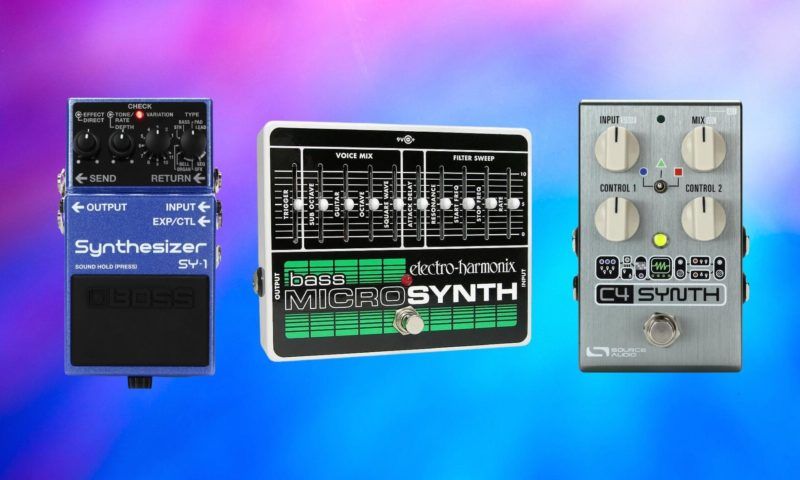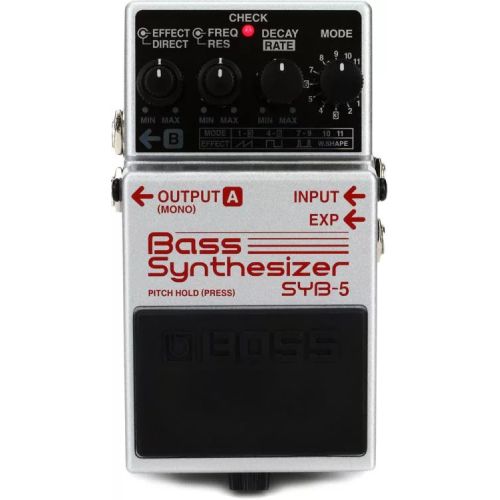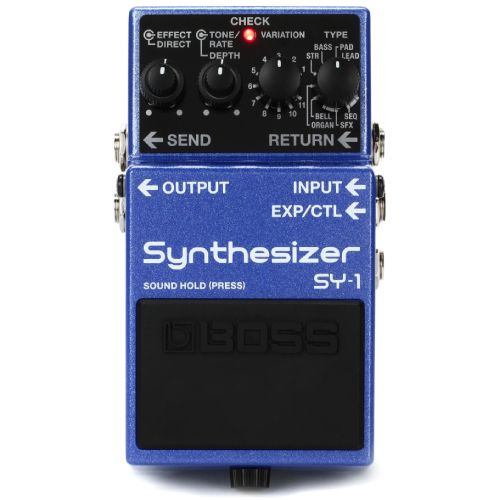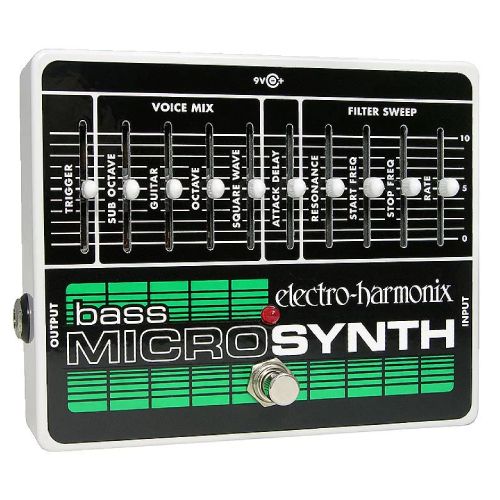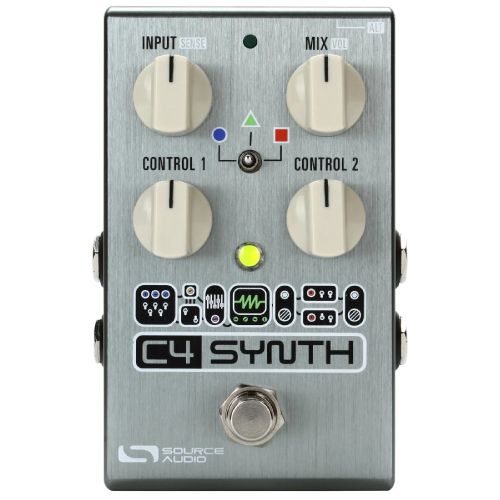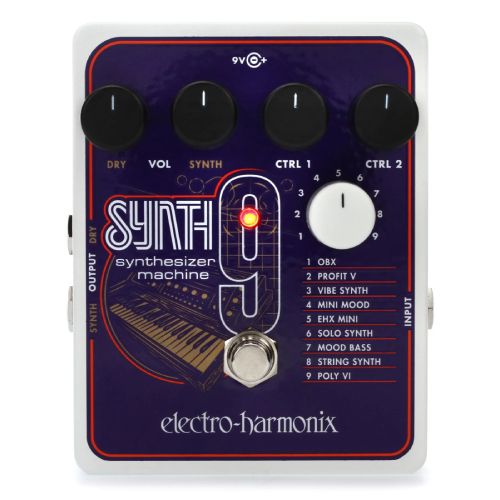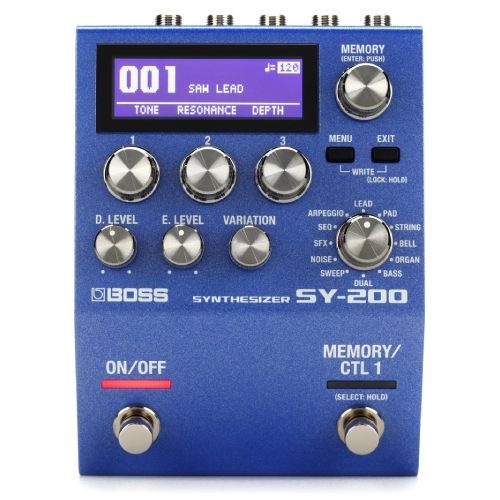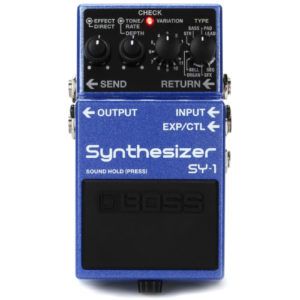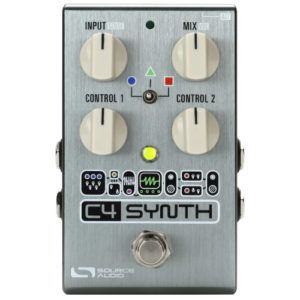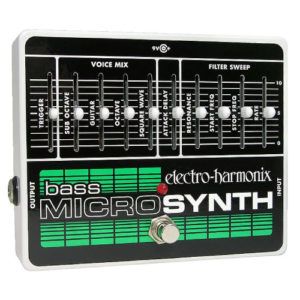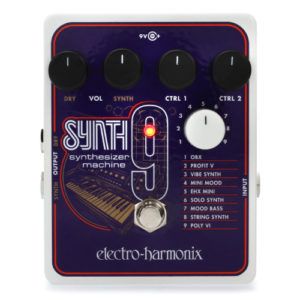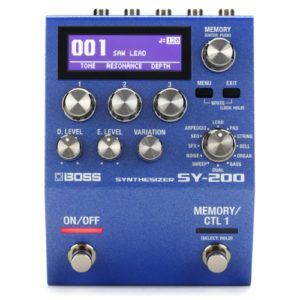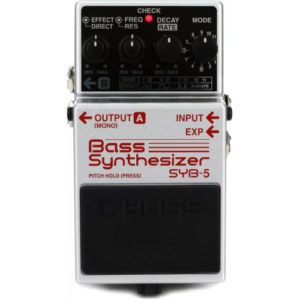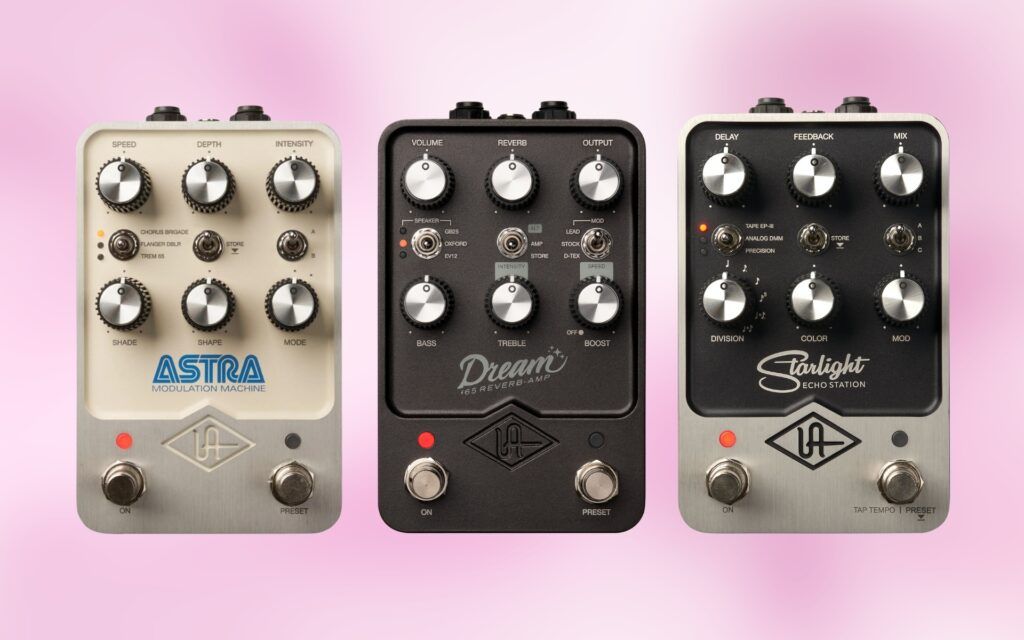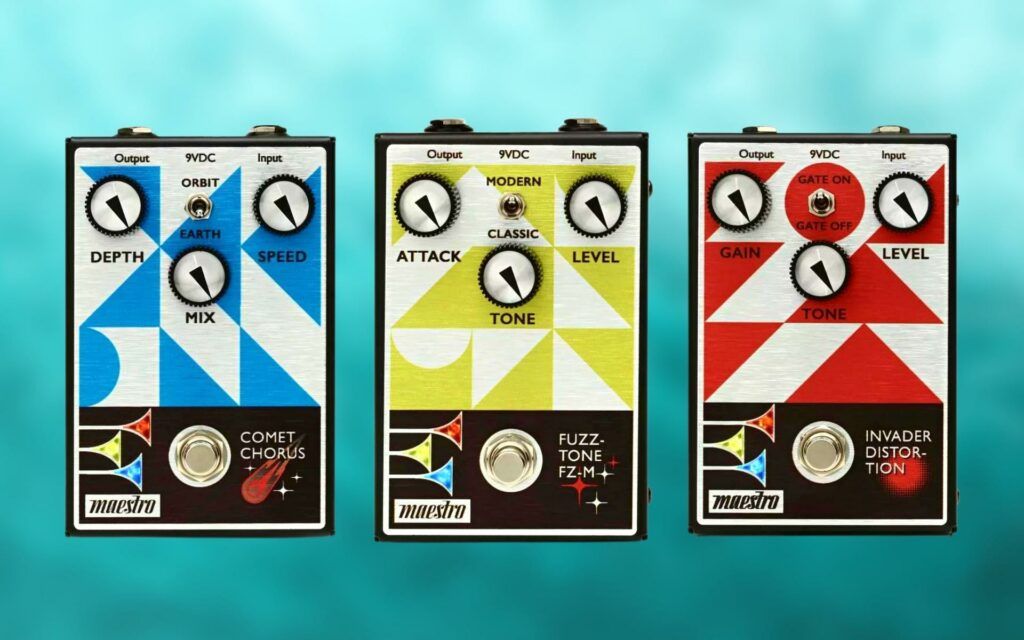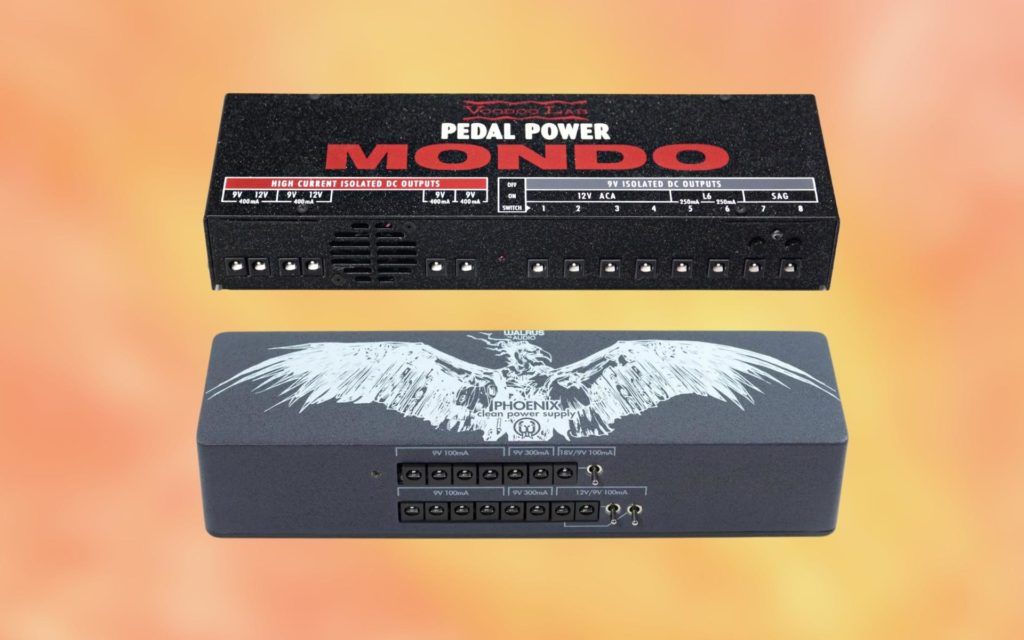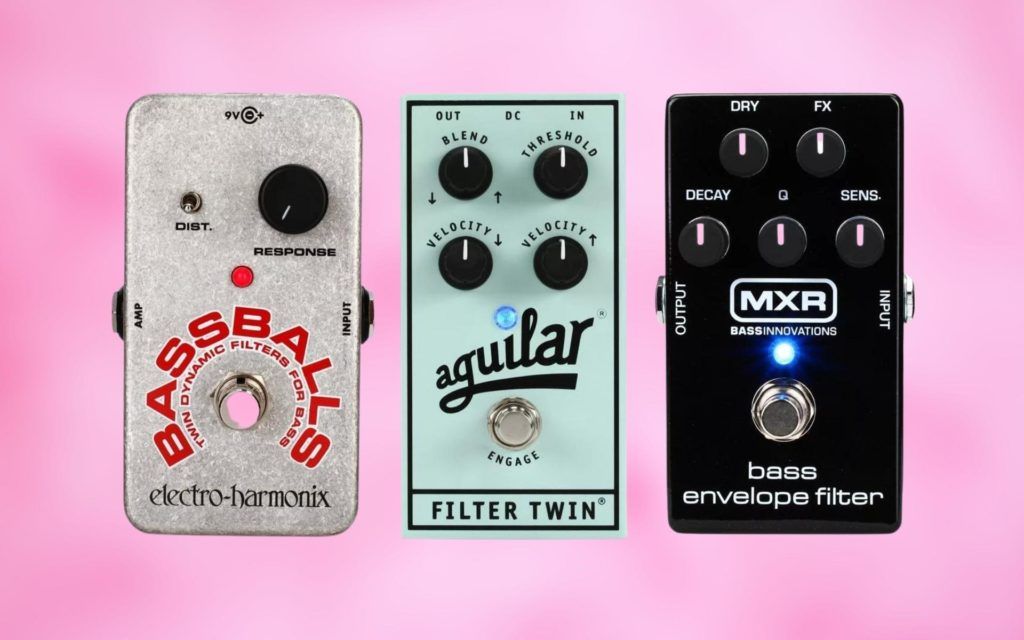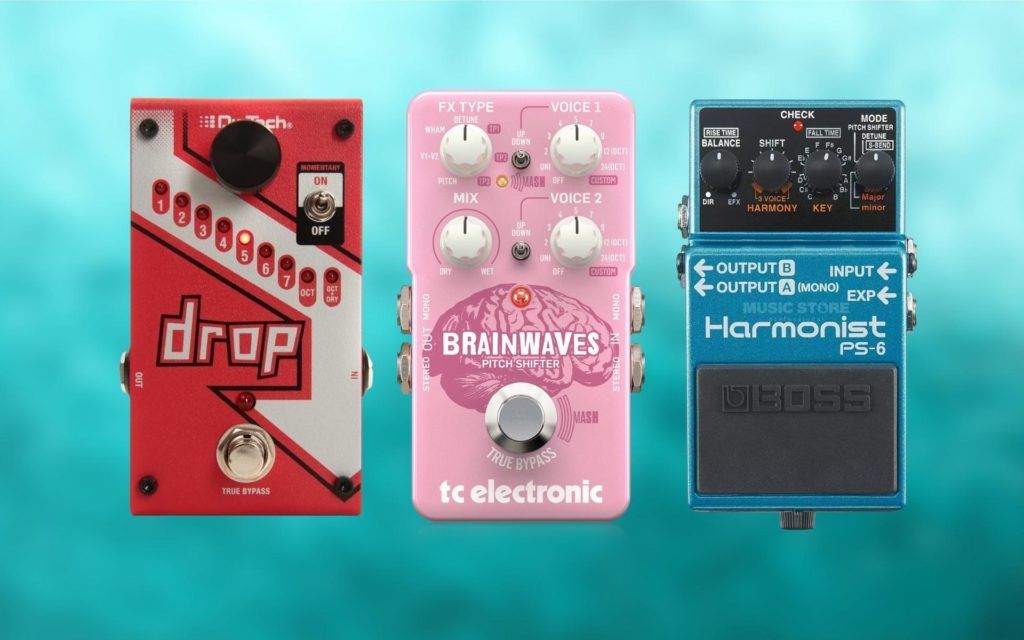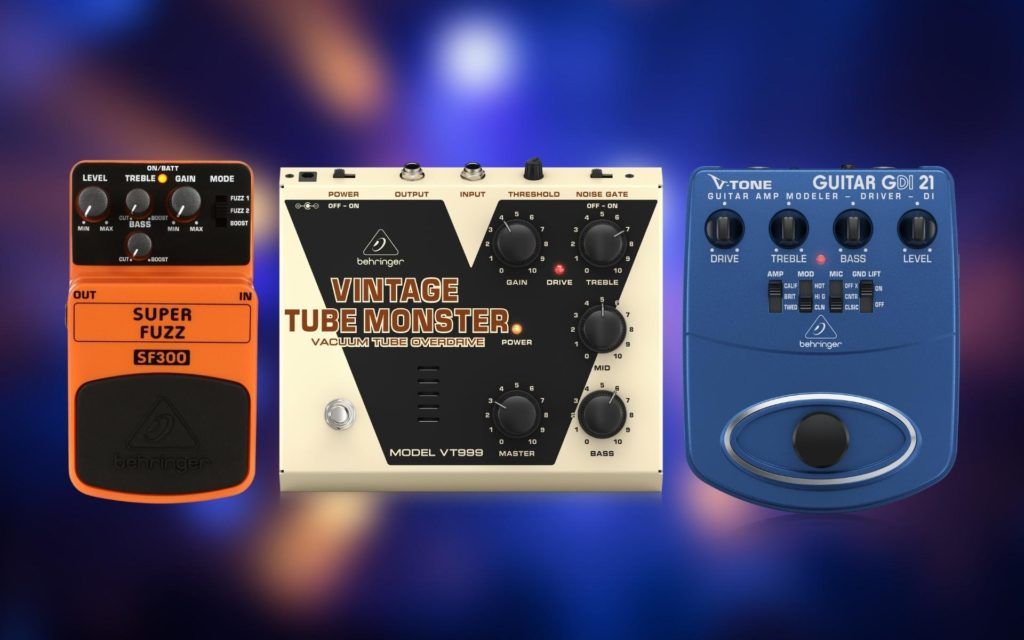We review products independently and our recommendations are genuine. If you purchase through links on our site, we may earn an affiliate commission. Learn More
Bass synth pedals are amongst the most transformative devices that a bassist can add to their rig.
They add synth-like qualities to the bass output and allow the musician to tweak rhythmic, dynamic, and tonal aspects of the sound.
For many decades, effects pedals were predominantly designed for and used by electric guitarists. However, the modern bassist now has a wide selection of effects pedals to choose from.
If you’re interested in pushing the boundaries of what your bass is capable of, you’ve come to the right place. In this guide, you’ll find the bass synth pedals that money can buy.
In a Rush Roundup
How We Tested
To test these bass synth pedals, we first looked at the number of onboard controls they have. We then tested how easy it is to operate the controls, and how they impact the dynamics and tone of the bass synth effect.
Next, we looked at the number of inputs and outputs that the pedals have. We then compared their durability and tested them to see if they fell victim to noise issues when used with other bass effects.
Best Bass Synth Pedal Reviews
Boss SY-1 Guitar and Bass Synthesizer Pedal
Boss SY-1 Guitar and Bass Synthesizer Pedal Review
Boss stompboxes have a legendary reputation. Roadworthy, compact, and easy to operate, the SY-1 embodies all of the manufacturer’s signature qualities. It features four rotary controls, each of which impacts the synth effect dramatically.
Using the technology behind the popular SY-300, Boss has taken inspiration from genuine analog synthesizer sounds. With 121 presets to choose from, this pedal will keep you occupied for a long time.
Many synth pedals are either designed specifically for bass or guitar, but the Boss SY-1 works equally effectively with both instruments. There’s no tone suck whatsoever, and the low-end thickness of your bass won’t be compromised when the synth effect is active.
All of the included synth sounds are polyphonic by nature. This means that if you play bass chords as well as single notes, it won’t cause the pedal to malfunction or sound weird.
The pedal has been designed to be completely free of latency. This ensures that even when you engage several of the onboard features, you won’t be interrupted by noise issues or delays.
Additionally, the pedal has a dedicated input for an expression or tap tempo pedal controller which can be used to adjust the settings without needing to use your hands.
Features
- Polyphonic synth pedal
- 121 onboard sounds
- Parallel send and return loop
Pros
- Allows you to create your unique synth tones
- Compatible with bass or guitar
- Can be used with an expression pedal
Cons
- Large numbers of sounds may be overwhelming
Source Audio C4 Synth Pedal
Source Audio C4 Synth Pedal Review
Source Audio has a reputation for innovation, and the C4 is a perfect example of their expertise in the realm of complex effects pedals. Compatible with bass and electric guitar, this stompbox has a simple, 4-knob design.
Despite its simplicity, the pedal can be used to create some complex and advanced synth sounds. Choose between three main synths presets which are based on waveform types.
Then, once you’ve chosen the waveform preset, you can further tweak the dynamics and tone by using the Input, Mix, Control 1, and Control 2 parameters.
In addition to its transformative synth-effect capabilities, the Source Audio C4 Synth Pedal is great for connectivity. With two inputs installed, you can hook up a footswitch or expression pedal to further your control over the effect.
There’s also an additional output, which can be used to send the wet signal to a separate amplifier. This means you can keep your dry bass signal playing under the effect, to avoid losing any of your low-end power.
Finally, to use this pedal to its fullest potential, you can hook it up to the Nero Desktop Editor, which is free to download on Windows and Mac devices.
Features
- Pre-made or custom sequencer patterns
- Universal bypass
- 24 onboard filters
Pros
- Designed to resemble a genuine analog synth
- USB port for direct recording
- Highly customizable
Cons
- May require some prior knowledge of soundwaves and synthesizers
Electro-Harmonix Bass Micro Synth Pedal
Electro-Harmonix Bass Micro Synth Pedal Review
Although this pedal is named the Micro Synth, it is one of the most extensive options available to bassists. In typical Electro-Harmonix fashion, they’ve thrown away the rulebook and created a truly individual pedal.
Firstly, the Bass Micro Synth benefits from having a completely analog design. This means that the synth sounds it produces don’t come across as being forced or artificial, but rather sound authentic and realistic.
This pedal is designed specifically to transform the low-end frequencies of a bass guitar into a synth-like instrument. It achieves this by using one of four voices – Square Wave, Guitar, Octave, and Sub Octave,
Once the voice has been selected, you can use the 10 onboard sliders to customize every aspect of the sound. Classic controls like attack are included, along with less conventional ones like filter sweep resonance.
True bypass switching has been employed by EHX to ensure that the integrity of your clean signal is preserved, even when the pedal is not in use.
Another noteworthy aspect of this pedal is its build quality. It’s built like a tank – and is designed to withstand the inevitable wear and tear that occurs when rehearsing, performing, and recording.
Features
- 10 onboard sliders
- Four voice presets
- True bypass switching
Pros
- Gives you complete control over the bass synth effect
- Blends well with other bass effects
- Easy to operate with slider layout
Cons
- Large size compared to other stompbox pedals
Electro-Harmonix SYNTH9 Synthesizer Machine
Electro-Harmonix SYNTH9 Synthesizer Machine Review
The SYNTH9 pedal takes your bass or guitar signal and transforms it drastically. With nine onboard presets, each of which is clearly listed on the face of the pedal, you can choose between settings like Mood Bass, Vibe Synth, and String Synth.
After selecting your preferred preset, you can then use the four rotary controls at the top of the pedal to customize different aspects. There’s a dry level control and three other parameters which affect the tone of the preset.
Electro-Harmonix has installed separate outputs on this pedal. One is for outputting the dry signal, and the other is for the synthesizer effect output. this allows you to send them to separate amplifiers if you wish.
True bypass switching has been used to prevent the dreaded tone suck that can occur when you use a lot of bass pedals in your signal chain.
It’s important to note that the SYNTH9 has an inbuilt compressor, which is responsible for keeping the dynamics consistent. You, therefore, don’t need to use a compressor pedal with this device, as it does the same thing to your bass signal.
Features
- 9 onboard synth presets
- Precise note tracking
- Effects loop output
Pros
- Can be used with a two-amp setup
- Easy to operate thanks to rotary controls
- Clearly listed presets
Cons
- May reduce some of the low-end power of the bass guitar
Boss SY-200 Guitar and Bass Synthesizer Pedal
Boss SY-200 Guitar and Bass Synthesizer Pedal Review
At the core of this Boss SY-200 Synthesizer Pedal is a selection of 12 synthesizer presets, based on analog sounds. These presets can be customized in many different ways, which results in there being over 170 total sounds in this pedal’s arsenal.
However, you don’t have to rely solely on the presets to shape your bass synth tones. There is a huge memory bank with 128 slots especially for saving your sonic creations for later recall.
Boss has ensured that this pedal performs with no latency so that there’s no chance of you being interrupted when using it. The inclusion of a parallel send and return loop means other pedals can be combined with the SY-200 easily.
Additional inputs have been installed on the pedal so that it supports up to two expression pedals or footswitches. This is useful if you like to avoid bending down to change the settings while onstage.
This bass synthesizer pedal works with any type of pickup or amplifier. It’s extremely versatile, largely because it contains such a huge number of bass and guitar analog synth sounds.
Features
- 171 sound presets
- Space for 128 user presets
- Parallel send and return loop
Pros
- Wide range of bass synth sounds
- Versatile connectivity
- Reduces latency to zero
Cons
- Quite complicated to operate at first
Boss SYB-5 Bass Synthesizer Pedal
Boss SYB-5 Bass Synthesizer Pedal Review
Boss is hands-down the most prolific producer of bass synth pedals in the world. It’s incredible how they manage to create a variety of synth pedals, each of which offers the musician different qualities and advantages.
Styled in their classic compact stompbox design, the Boss SYB-5 has a minimalistic 4-knob control layout. On the right-hand side, there’s a Mode selector control, with 11 presets to choose from.
The other three controls affect aspects of the synthesizer effect such as resonance, prominent frequencies, decay, and the rate of the onboard LFO.
The onboard LFO modulation is one of the standout aspects of this pedal. It adds an authentic touch to the synth effect and provides you with the possibility of rhythmic variations.
When using one of the first 9 modes, you can press down on the pedal which causes the note to be held indefinitely. Then, you can play over the top of the held note – which is a great tool for solo bass performances.
Features
- 11 DSP presets
- Sound-based on saw, square, and pulse waves
- LFO modulation
Pros
- External pedals can be used to hold notes
- Easy to adjust the settings
- Reacts well to lower bass notes
Cons
- Does not come with an expression pedal
Bass Synth Pedals Buyer’s Guide
As musical genres have been merged, musicians are constantly looking for ways to transform the sound of their instruments. Bass synth pedals are an example of this desire for experimentation.
Indeed, it would be possible to create synth basslines using a keyboard, or by triggering samples on a laptop. However, there’s something special about the sound of a synthesized low-end instrument with the human qualities of a bass guitar.
Although these pedals are part of a specific niche, there have been more options created in recent years, as effects manufacturers recognize the popularity of synth-inspired bass guitar playing.
Before you decide which bass synth pedal you should add to your signal chain, check out some of the vital information in the sections below.
Things to consider when buying
Consider the control layout
Bass synth pedals are generally quite complex compared to other effects. If you enjoy sculpting your own sounds, look for a synth pedal that includes an array of adjustable controls and parameters for you to play around with.
Think about connectivity
Many bass effects pedals have multiple inputs and outputs to facilitate signal splitting and dual-amp setups. Bass synth pedals are no exception to this, and many have dedicated send/return loops specifically for extended rigs.
Look out for preset slots
Creating your unique synth effects is a lot of fun, but no matter how extensive the controls are on a pedal, if there’s no memory space to save your sounds, it is a little frustrating. Decide whether you require preset slots for the synth effects you create.
Consider LFOs
LFOs, or low-frequency oscillators, are integral parts of any synthesizer. The more LFOs there are on a pedal, the more strange, experimental sounds you’ll be able to create.
What Makes a Great Bass Synth Pedal?
Bass synth pedals can be split into two distinct categories. Firstly, you have pedals that are designed to produce a small number of synth bass tones, that can be tweaked using an array of onboard controls.
Then you have the synth bass pedals that are more preset-focused, meaning that the sounds are, to an extent, pre-determined. These pedals may offer some room for adjustment, but they are less flexible than the other variety.
You need to decide whether you will benefit more from having a wide range of presets to choose from, or whether you would rather take a manual approach to shaping the bass synth effect.
One of the main qualities to look out for when searching for a bass synth pedal is flexibility.
Whether the pedal is preset-focused or has more tweakable controls, it should still provide you with a wide range of high-quality bass synth sounds to work with.
How Bass Synth Pedals Work
To ensure that you choose the right bass synth pedal, you must have an understanding of how these unique pedals work.
The three key elements of most bass synth pedals are:
- Tracking
- Pitch detection
- Oscillation
When you plug your bass into the pedal and play a note, the device tracks the signal and detects its pitch (or frequency).
Then, the pedal uses the pitch information from the notes you’ve plated to trigger a device known as an oscillator. Oscillators are very common in all types of synthesizers.
The oscillator is then applied to the signal and outputted from the pedal, creating the synth bass effect. In many cases, these pedals use an LFO (low-frequency-oscillator), which allows them to target the bass frequencies.
Therefore, these pedals create the effect by utilizing a synthesizer circuit that is built within the device.
It’s advisable to look out for the type of tracking and oscillators that a bass synth pedal uses. Manufacturers who focus on these aspects are much more likely to create a high-quality pedal.
Signal Chain Placement
Most guitarists are aware of the importance of choosing the appropriate positions for their pedals within the signal chain. Bassists, in my experience, sometimes overlook this process.
It’s vitally important to place your bass synth pedal in the position that will cause it to interact with your other pedals most efficiently.
Bass synth pedals are unique, but they are commonly placed into a category with filter pedals. These include devices like wah pedals or envelope filter pedals.
This type of pedal tends to work best when it is placed as early in the signal chain as possible. The reason for this is that you want the driest, least altered signal being fed into the synth device to get the most out of the effect.
Pedals that use tracking, like synth bass devices, commonly perform this function more effectively when they are placed towards the start of the signal chain.
Bass Synth Pedal FAQs
Can I Use a Guitar Synth Pedal on Bass?
While it is possible to use a guitar synth pedal on bass, or any guitar pedal for that matter, you won’t achieve the same level of results that a device specifically designed for bass can offer.
Guitar synth pedals are designed to impact the frequencies commonly produced by a guitar in standard tuning. Bass pedals are designed to work with frequencies that are an octave lower.
Consequently, you will notice that the low-end frequencies of a bass sound weaker when you use a guitar synth pedal.
Can You Run a Synth Through a Bass Pedal?
Some bass and guitar pedals can be used with synthesizers or keyboards, but the effectiveness of doing this depends on several factors.
Synthesizers produce a wide variety of sounds, so it depends on the specific sound you’re using when you plug it into a bass pedal.
If you’re using a sound that has a similar tone and frequency response to a bass guitar, then the effect from the pedal will probably be compatible.
Are Bass Synth Pedals True Bypass?
The vast majority of bass synth pedals use true bypass, to ensure that the signal strength is preserved throughout the chain. Some boutique pedals may use a buffer instead, which is generally more effective with long cables.

